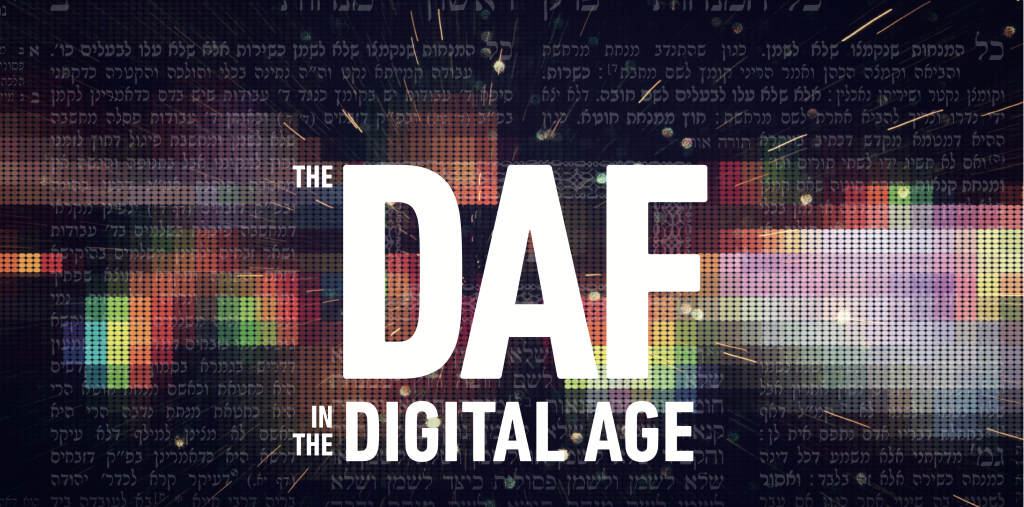The Daf in the Digital Age
The Talmud is the lifeblood of the Jewish people and Daf Yomi exemplifies the mass reconnection to that source of faith and guidance we experience in our age. With all the challenges of the Internet age—the constant distraction; the onslaught of information; the radical openness to everything sacred and unholy; the challenges to our personal and family sanctity—the open page of the Talmud looks both the same and very different than in past years. The new tools available to us, the audio-visual-textual commentaries available to beginner and expert alike, offer people with different skill sets entry to the challenging text of our tradition.
Many recent thinkers have compared the Talmud to the hyper-linked text of the Internet in many ways. While there is some truth to this abstract comparison, a contrast in the other direction deserves our attention as well. In many ways, Daf Yomi is the opposite of the Internet. “The Daf” begins with Berachot 2a and continues for 2,711 pages until it concludes with Niddah 73a. Of course, you can start anywhere in the middle, particularly at the beginning of any of the thirty-seven masechtot. But it has a discrete beginning and end, followed by a siyum celebration and return to the beginning. In contrast, the Internet has no entrance or exit. Every article contains links to many others. Every person has his own beginning and only stops when other concerns beckon. Even an individual never enters or exits his social media feed at the same place twice. Daf Yomi approaches a finite text with infinite depth. The Internet, like the universe, constantly expands.
The Daf, like its name, is an experience of the page. We study the text, perhaps with additional tools when available, but always remaining on, or at least returning to, the page. The Internet has no anchor, sending you across the globe with endless links. YouTube videos move from one to the next, sending the user down the winding path of an often baffling algorithm. Social media giants desperately try to keep users on their platforms, generally to little avail. The constant movement of the Internet keeps users in motion, circling across the span of information. The Daf contains an internal speed limit and single direction—always forward, onto the next page at a uniform pace.
Finding explanations of the Daf requires effort. Some commentaries can be found encircling the text, but locating the illuminating entry in Sefer HaMitzvot or responsum of the Chatam Sofer requires skill and no small measure of Divine assistance. Alternate opinions on the Internet lie a Google search away. No opinion is too large or too small to lack a contradictory view, readily available to anyone with the time and interest to delve into the maze.
Perhaps most importantly, learning the Daf generates community. Even if you do not attend a shiur where collegiality naturally grows, merely studying the same page as thousands of others creates instant connections. Many wedding table conversations begin, not with the awkward questions about hometown and occupation, but with “did you see today’s Daf?” As social scientists have adequately documented, the Internet causes isolation despite its focus on “communities.” The falseness of online persona, the distraction from real life, the superficiality of the relationships detract from meaningful community life.
When used healthily, the Internet can be a strong tool for life and for learning the Daf. In these pages, we explore how Daf Yomi can transform lives and how digital tools can enhance and deepen that experience.
Rabbi Gil Student writes frequently on Jewish issues and runs Torahmusings.com. He is a member of the Jewish Action Editorial Committee.
Articles in this section:
Up Close with Dr. Henry Abramson, interview by Sholom Licht
In Their Own Words—How Daf Yomi has Changed Lives

